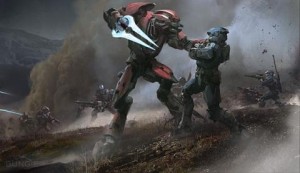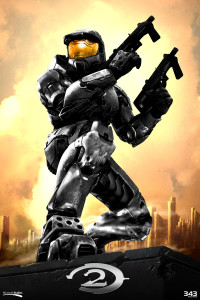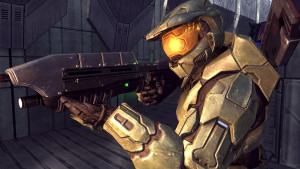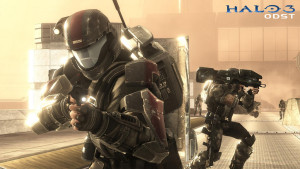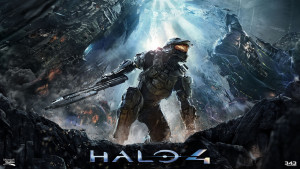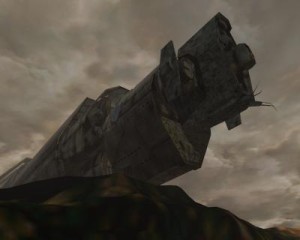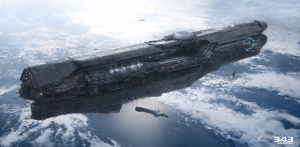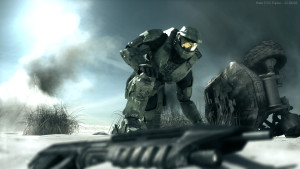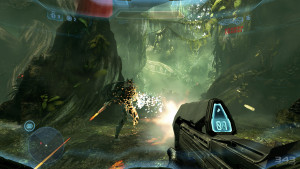Halo: Analysis
One of gaming’s most revered titles, Halo is Microsoft’s baby/cash cow. When it first came out in 2001, Halo: Combat Evolved was quite ground-breaking. Bungie had a solid story, great characters, excellent level design (with a few exceptions, of course), and an innovative approach to the First Person Shooter genre. But what about now? Bungie’s last title in the series was in 2010 with Halo: Reach, before it dedicated itself to a new project, which has seen its own controversies. 343 Industries, Microsoft’s in-house game studio, took up the mantle of responsibility (for the Halo scholars…) in 2011 when it showed a teaser for Halo 4 at E3. And now Halo 5: Guardians has been released. I thought I’d take this opportunity to look over the games and see what’s changed, and what’s stayed the same.
Halo: Combat Evolved had a turbulent beginning. Originally envisioned as a Real-Time Strategy game in 1999 for the PC and Mac, the game went through a number of revisions, becoming a Third-Person action game, and then the First Person Shooter we know and love after Microsoft acquired Bungie Studios in 2000, moving the game to its fledgling Xbox console.
Bungie had plenty of story elements that it couldn’t fit into the first game, and following the commercial success of Halo: CE, it got a chance to flesh them out. Halo 2 was announced with a graphically impressive trailer in 2002 though that game engine was discarded. As was the graphics engine for the playable demo that was at E3 in 2003. With no working build of the game for nearly a year, the studio lacked the “polish” period it needed to make the game that Bungie wanted. With an impending deadline, the story and multiplayer of Halo 2 suffered, according to Chris Butcher, and was “a pale shadow of what it could and should have been”. Despite these shortcomings, the game was well received.
In contrast to Halo 2, Halo 3 was always the plan. Elements of the studio were dedicated to its release before Halo 2 had been finished though Bungie remained quiet on what it was working on. Halo 3 (it seems) didn’t have the issues Halo 2 encountered. The story was fleshed out and solid though people complained that the length of the campaign was too short.
Bungie wrapped up its time in the Halo universe with Halo 3: ODST, where the player is a ‘simple’ (yet still super-strong) human in an elite military Special Forces group during the Battle for Earth, and then the prequel Halo: Reach which shows the fall of humanity’s last stronghold before Earth. Both games received praise and criticism for their story and multiplayer, but the overall reception was still mostly positive.
While Bungie may have moved on, Microsoft had the intellectual property rights and wasn’t finished with Halo. And why should it be? It has a great universe at its fingertips, with strong foundations and great expansions to the story with novels, comics, as well as live-action and animated features. It established 343 Industries, an in-house studio which was tasked with continuing the Halo saga. Its first true foray into the Halo field was Halo 4. It was ambitious – they made a studio which was full of talented people, but these people mostly hadn’t worked on a game together.
Halo 4 was a decent attempt by a newly formed studio, with many critics praising it on returning the Chief and Cortana to the fore of Halo, and the storytelling direction the studio was taking. There were some gripes about the game being limited by the graphical power of the Xbox 360, which was at that time seven years old. But most people agreed it was missing something.
The story that Bungie told was one of desperation. A technologically superior and stronger force was bearing down on humanity with genocidal intent. Mankind’s only hope was a single super-soldier, but the Master Chief was only ever reacting to events. You always felt like you were on the back foot, and everything was a last desperate move at the endgame. Add to this the Flood, a totally different enemy, but just as destructive, and the game-world felt like the cards were always stacked against you. But Chief and Cortana just managed to pull it off, despite almost everyone else dying and most of the ships they set foot on being destroyed in some manner.
343’s story does not have that. The gameplay is there, the enemies are there, the graphics and behind-the-scenes mechanics (especially when looking at Halo 5) are there. But the atmosphere is not. The sense that you’re on the precipice fighting desperately for your species very existence is missing.
That’s the major change from Bungie to 343 – the sense of desperation. It set the tone for the Halo experience. Bungie had humanity at the brink; its colonies were annihilated, its fleets destroyed, and its last hope was a single individual who was lucky as hell and his digital companion. 343 has seen humanity somehow rebuild dozens of colony worlds in the scant 5 years after being on the edge of this extinction, reproduce a galactic-sized fleet led by a mammoth ship called the Infinity (really? That was your best name? Not Redemption, or Redeemer, or something in the vein of Pillar of Autumn, In Amber Clad, or Forward unto Dawn?) and awaken the Forerunners (which Bungie made out to be a benevolent race, from what I read in Halo 3’s terminals).
The core part of what makes 343’s Halo is the Chief. They may have changed is motivations, and his armour (which I quite like), but his core character is intact. He’s just as recognisable across all iterations of the Halo series. They’ve also kept the core gunplay that makes Halo feel like Halo. While some guns are essentially clones (Battle Rifle/Promethean Light Rifle, and Chief’s Assault Rifle/Covenant Storm Rifle) they’re still what you’d expect in a Halo game.
If 343 can find that missing desperation to the gameplay, then they will be able to move out of the shadow that is Bungie’s Halo legacy. The additions of clambering, Smart Scope (aiming down sights – which some find controversial – is the direction the genre is moving to), and the innovations they are no doubt yet to bring to the continuing story could see them surpass Bungie’s efforts in the eyes of fans and critics, if they can just find that overall feeling.

